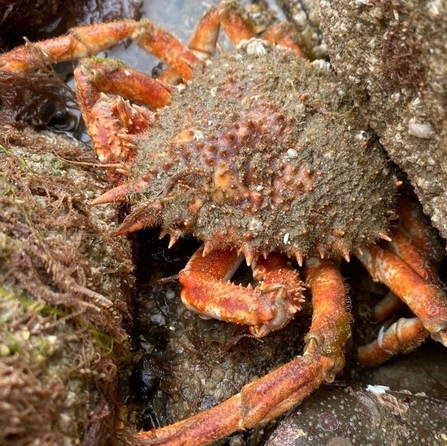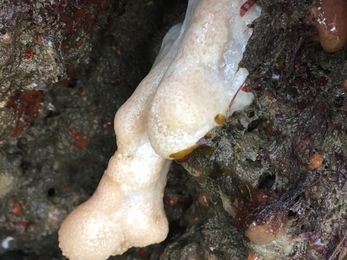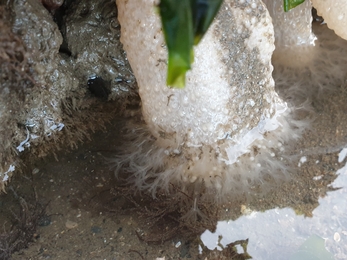The Shoresearches were carried out at Llandudno Pier (PEN Y GOGARTH/GREAT ORMES HEAD SSSI, Y Fenai a Bae Conwy / Menai Strait and Conwy Bay SAC, Liverpool Bay / Bae Lerpwl SPA), Criccieth (GLANLLYNNAU A GLANNAU PEN-Y-CHAIN I GRICIETH SSSI , Northern Cardigan Bay / Gogledd Bae Ceredigion SPA, Pen Llyn a’r Sarnau / Lleyn Peninsula and the Sarnau SAC, visit https://www.penllynarsarnau.co.uk/ for more information) and Porth Swtan which falls under North Anglesey Marine / Gogledd Môn Forol SAC and Anglesey Terns / Morwenoliaid Ynys Môn SPA. Porth Swtan does not fall under any SSSI, however it was visited to search for carpet sea squirt, an invasive species known to live in Holyhead marina, that could have travelled during storms.
Surveys completed Walkover area: 1757 m2; Number of quadrats: 5;
Number of volunteers: 14; Number of new recruits coming to group surveys: 6; Have-a-go attendees: 2
Timed species searches (for INNS during National Invasive Species Week): Slipper limpet – 90 minutes; Wakame – 80 minutes; Wireweed – 40 minutes; Carpet Sea Squirt – 150 minutes
















